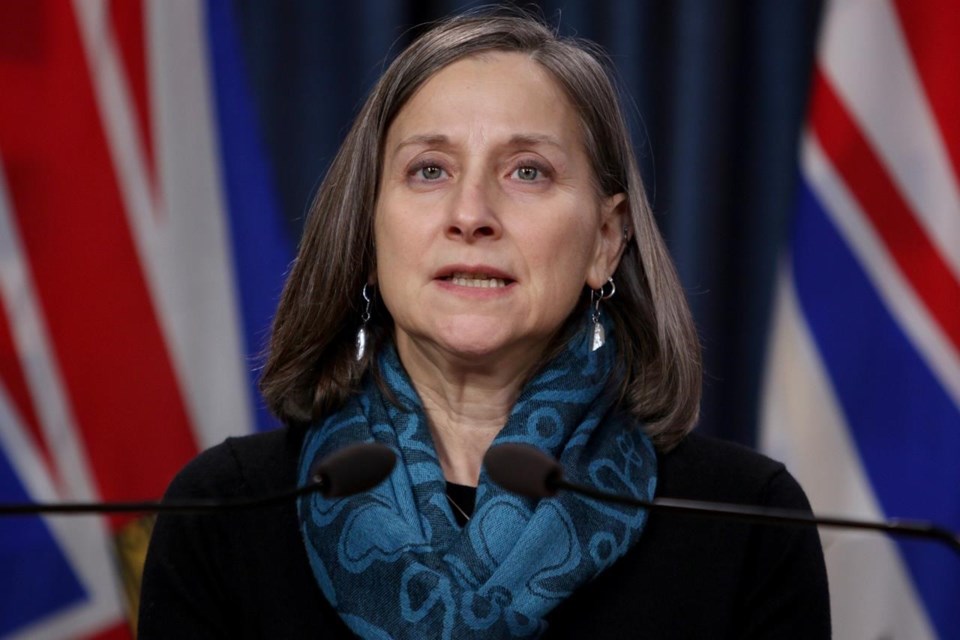VANCOUVER — Nearly two-thirds of the overdose deaths in British Columbia this year came after smoking illicit drugs, yet only 40 per cent of the supervised consumption sites in the province offer a safe place to smoke, and the chief coroner says that needs to change.
Lisa Lapointe said the latest data show 65 per cent of overdose deaths in 2023 came after smoking drugs, compared to 15 per cent involving injection, 14 per cent snorting and five per cent from oral consumption. The coroners' office notes that people can consume using multiple methods.
Also in the data, the updated overdose death toll since the province declared a public health emergency in April 2016. Almost 13,000 have died since then, more than 1,600 this year.
The Ministry of Mental Health and Addictions said of the 47 overdose prevention sites in B.C., only 19 provide the option to smoke drugs.
B.C.'s original supervised consumption site is a safe injection site, but Lapointe said methods for consuming drugs have shifted over time.
"If we truly want to reduce the risk, and reduce the numbers of deaths, and help make our communities safer, then there needs to be an acknowledgment that providing a safe place for people to use drugs is critically important," Lapointe said.
"And that includes a safe place to smoke drugs."
Those who study the topic say a combination of stigma, bureaucracy and a lack of political will are all obstacles to setting up more sites for smoking drugs.
The latest analysis of the deaths contrasts with data from January 2016 to July 2017, following the declaration of the emergency, which show that one-third of deaths came through injecting drugs, while 36 per cent who died smoked drugs.
While Lapointe's office has not made any formal recommendations, she said she's heard from community groups that there are not enough safe spaces generally to use drugs, but particularly not to smoke.
"Clearly, smoking drugs is much more popular now than injecting drugs. If we want to keep people safe, if we want to reduce the death toll from the opioid crisis, then we need to be meeting people where they are, and certainly (there's) a need to adapt policies, whatever they may be," she said.
Nicole Luongo, the systems change co-ordinator for the Canadian Drug Policy Coalition, based at Simon Fraser University in Burnaby, B.C., said the rules around setting up safe inhalation sites are overly complicated but don't have to be, given the extra powers the government has to act under the emergency declaration.
"We are seeing harm reduction sites still being tailored around injection and the ability to introduce inhalation sites being really mired in bureaucracy," Luongo said.
"And they're expensive as well, to introduce the kind of equipment that would reduce risk for outside observers."
In a statement, the Ministry of Mental Health and Addictions says local health authorities are responsible for the operation of those services and they have been working to increase the number of inhalation sites.
It says considerations for implementing inhalation sites include whether there is a suitable outdoor space, particularly during the winter, occupational health and safety concerns and worker safety issues, primarily due to specialized ventilation requirements.
In B.C., community groups have set up observed inhalation sites — usually in tents outdoors — where peers monitor users for an overdose, but Luongo said they can face opposition from cities even though a 2016 provincial ministerial order allows overdose prevention services anywhere they are needed.
Nevertheless, she said local governments continue to pass bylaws that include zoning restrictions that are preventing the opening of both inhalation and safe injection sites.
"At times, we have seen progress being made toward the opening of a site and then, due to community pushback, the municipality will renege"
Luongo said that level of stigma is a sign for Ottawa to declare a nationwide emergency, and both the province and the federal government need to "actually enforce pathways for implementing things like harm reduction services, as well as access to a regulated safe supply with various options for administration."
B.C.'s Minister of Mental Health and Addictions Jennifer Whiteside was not made available for an interview.
In a statement, she said the government is doing everything it can to save lives and separate people from toxic drugs.
"That’s why our government has rapidly scaled up overdose prevention and harm reduction measures since 2017. This includes significantly increasing the number of overdose prevention services from one site in 2016 to 47 sites as of July 2023, including 19 sites offering inhalation services."
Luongo said in the early years of the crisis there was more trust in smoking stimulants, which were less likely to be altered. However, that's no longer the case, with toxic additives being included in everything, she said.
She said Canada's safe supply programs, which provide regulated versions of some criminalized drugs, need to be expanded and include more inhalable options.
The province is on pace for another record-breaking year of deaths from toxic drugs in 2023. The Coroners Service said unregulated drug toxicity is the leading cause of death in the province for people aged 10 to 59, accounting for more deaths than homicides, suicides, accidents and natural diseases combined.
This report by The Canadian Press was first published Oct. 1, 2024.
Ashley Joannou, The Canadian Press



